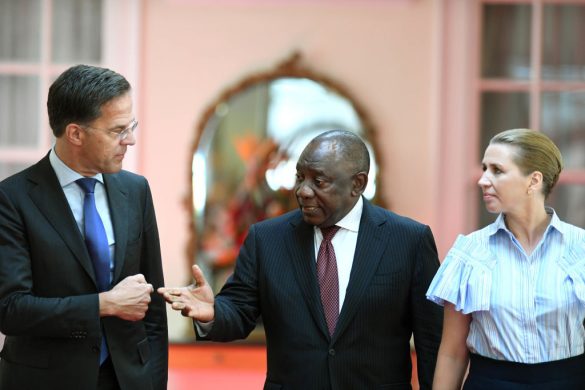I Rwanda er det lykkedes at opnå gode resultater på både miljøbeskyttende indsatser og øget turisme – den indkomst bliver nemlig reinvesteret i miljøbeskyttelse.
Rwanda has undergone a remarkable economic and social reconstruction in recent years and recorded consistent growth rates of 8 per cent a year between 2001 and 2012, according to the BBC’s Country Profile. The International Monetary Fund and the World Bank say that the country, along with many of its African neighbours, is entering an economic boom.
Success has not, however, resulted in complacency in Rwanda. Rather than sitting on progress already made, the country – whose economy is predominantly driven by tourism and coffee and tea exports – has decided to plan for the future and is pursuing a development strategy that prioritizes the protection of the environment. As part of its national vision through to 2020, the government has undertaken many initiatives in recent years to protect ecosystems for income generation and good governance.
A number of projects, including initiatives to preserve the Rwandan mountain gorilla and wetland restoration efforts in the Nyabarongo-Akagera network and Rugezi, are already beginning to reap environmental, economic and employment benefits.
Rwanda is home to the Gorilla beringei graueri, which is one of the world’s rarest species of gorilla. By collaborating with the Democratic Republic of Congo and Uganda in a shared commitment to ecosystem restoration, Rwanda has helped to restore the population of this critically endangered species to a slight increase in the Virungas National Park.
In addition to the ecological benefits of preserving a threatened species, this scheme to protect the Rwandan mountain gorilla is also generating substantial revenues from tourism. The country’s booming tourism industry, which now accounts for the biggest share of national GDP, is driven primarily by the country’s iconic gorilla.
After a decline in tourism in the 1990s, gorilla visitation has since increased from less than 1200 tourists in 2000 to a record of 7417 visitors in 2004. With visitors paying USD 375 each to see the gorillas, these tourists have generated over USD 3 million in revenue every year since 2005. This has also contributed to the creation of many new jobs associated with the management and maintenance of the National Park and its related touristic activities.
According to the Rwandan government, the majority of the revenue produced by tourism is reinvested in the park and in wildlife conservation. Some of these profits are also devoted to projects in the area so that the local people can also benefit from the enormous revenues generated by the park.
Rwanda’s wetland restoration efforts are another milestone in rebuilding the country’s natural capital. The wetlands in Rwanda cover a total area of 165,000 hectares, comprising about 7 per cent of the country’s total surface area. The marshy lakeside Akanyaru complex of Nyabarongo and Akagera National Parks are hot spots for biodiversity and are especially rich in bird species.
The Association for the Conservation of Nature in Rwanda is combating the intensive illegal farming along the Nyabarongo River by eliminating agricultural crops and training the local community in the production of high-quality products made from materials harvested sustainably from the wetland, such as papyrus and pennisetum.
This conservation programme has resulted not only environmental but also economic benefits. For example, previously, basket weavers manufactured low-quality products and sold them for USD 2 to USD 3. After receiving training and gaining access to new markets, these same individuals can now sell higher-quality woven baskets for USD 10.
Similarly, a wetland restoration effort in Rugezi has also improved livelihoods and created alternative forms of employment. Largely owing to the degradation of Rugezi’s wetland ecosystem and drop in water levels, the Nturuka power generation dropped systematically between 2003 and 2007 – translating into economic losses of USD 856,994 for the electricity-producing ELECTROGAZ.
Ecosystem restoration efforts began in 2005, and by 2008 the recovery was estimated at USD 149,670. Increased water levels also led to the construction of a 2.1 MW hydro power station and jobs for rural residents with multiplier effects for other socio-economic activities.
Rwanda’s successes have shown that meeting environmental challenges and satisfying growing consumption needs does not necessary mean a limiting of horizons. In fact, Rwanda has shown that countries stand to gain exponential economic benefits if ecosystems are kept healthy and productive.
The potential global benefits to be reaped from ecosystem restoration projects are hard to overestimate. Services provided by biodiversity and ecosystems are estimated to be worth over USD 21-72 trillion every year – comparable to the World Gross National Income of USD 58 trillion in 2008.
The changes taking place in Rwanda spotlight the fact that a transition to the Green Economy – an economic system that provides a life of dignity for all while safeguarding natural resources – is both necessary and within reach of all nations, developed or developing.














